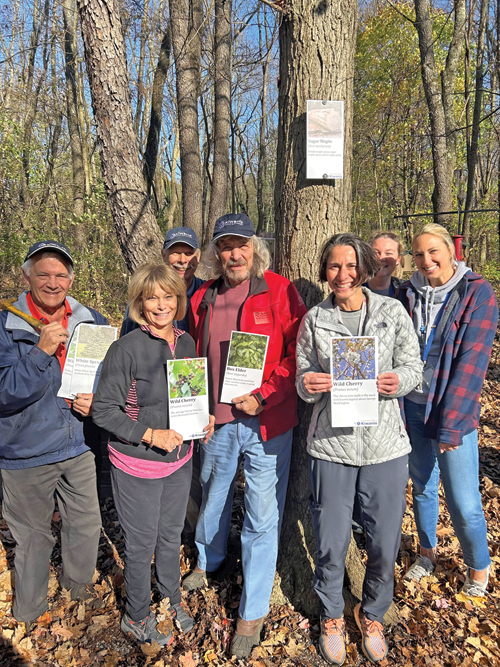Kiwanis helps park visitors know their trees
Mike Marks grows tropical bonsai trees in his house, and that’s not all.
“I have trees from four continents, 18 kinds of rainforest ficuses,’’ he said. “I like growing things, so yes, I like trees.’’
Marks turned his love of plants into a project for the Bath-Richfield Kiwanis. He branched out, pardon the expression, from merely nurturing trees in his home to implementing KNOT, which stands for Kiwanis Naming of Trees.
The essence of the Kiwanis project is to label trees by type, include their scientific name plus other information and a “fun fact.’’ According to Marks, the club created signs representing 25-30 types of trees, each sign printed with the common name of the tree, its genus and species, a picture of its bark, nut or flower and a fun fact plus the Bath-Richfield Kiwanis logo.
The entire club membership contributed and researched the fun facts used and four arborists donated their time to help identify each tree and supply the scientific information.
They started the labeling last year along the Carter-Pedigo trail. They picked the project back up this year and labeled trees in the outdoor classroom of Bath Elementary School and in Richfield Woods Park.
A couple of fun facts about the trees that grow in this area:
• The Shagbark Hickory can live for more than 350 years, and Native Americans used its milk to make corn cakes and hominy.
• The Scots or Scotch Pine is a good nesting tree for owls.
• Most common trees on the trails of over 80 identified species are Norway Spruce, Eastern White Pine, Scots Pine, Pin Oak, Black Cherry, Sugar Maple, Red Maple, American Beech, and Shagbark Hickory.∞
Photo: Kiwanians (l-r) Jerry Baley, Laura Yost, Jeff Sprungl and Mike Marks, and Bath Elementary educators Michelle George, Elizabeth Hinkle and Kara Maloney hung identifier signs on trees in the outdoor classroom of Bath Elementary School. Photo submitted.

